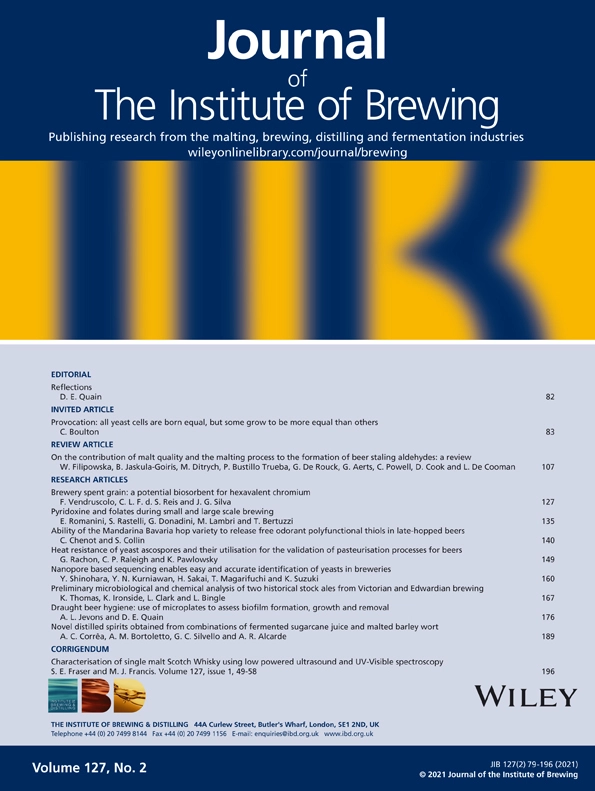Ver ítem
- xmlui.general.dspace_homeCentros Regionales y EEAsCentro Regional Buenos Aires NorteEEA PergaminoArtículos científicosxmlui.ArtifactBrowser.ItemViewer.trail
- Inicio
- Centros Regionales y EEAs
- Centro Regional Buenos Aires Norte
- EEA Pergamino
- Artículos científicos
- Ver ítem
Grain hordein content and malt quality as affected by foliar nitrogen fertilisation at heading
Resumen
Nitrogen fertilisation at heading is a practice for increasing grain protein content in malting barley. The objective of this study was to assess the effects of fertilisation on grain protein, the content and composition of hordeins, and relationship to malt quality. In 25 field experiments in the Argentine Pampas, the effect of foliar nitrogen fertilisation at heading on the grain protein content was evaluated. In five experiments, the content and
[ver mas...]
Nitrogen fertilisation at heading is a practice for increasing grain protein content in malting barley. The objective of this study was to assess the effects of fertilisation on grain protein, the content and composition of hordeins, and relationship to malt quality. In 25 field experiments in the Argentine Pampas, the effect of foliar nitrogen fertilisation at heading on the grain protein content was evaluated. In five experiments, the content and composition of hordeins and some malting quality indices was assessed. Nitrogen fertilisation at heading increased grain protein content, hordein content and the proportion of hordein C, and decreased the proportion of hordein B. In addition, malts obtained from the grains of the crops fertilised with nitrogen at heading had lower extract and higher hardness than those obtained without fertilisation. Malt extract was negatively associated with total hordein (or protein) content and positively with grain size. The inclusion of the fractions into which hordeins are classified did not improve the explanatory models for malt extract. Therefore, the composition of hordein does not seem to be a determining factor for malt extract when comparing samples with and without nitrogen fertilisation at heading. © 2021 The Institute of Brewing & Distilling.
[Cerrar]

Autor
Prystupa, Pablo;
Peton, Andrés;
Pagano, Eduardo;
Ferraris, Gustavo Nestor;
Ventimiglia, Luis Alberto;
Loewy, Tomas;
Gómez, Federico;
Gutierrez-Boem, Flavio Hernán;
Fuente
Journal of the Institute of Brewing 127 : 1-8. (May 2021)
Fecha
2021-05
Editorial
Wiley
ISSN
2050-0416 (online)
Formato
pdf
Tipo de documento
artículo
Palabras Claves
Derechos de acceso
Restringido
 Excepto donde se diga explicitamente, este item se publica bajo la siguiente descripción: Creative Commons Attribution-NonCommercial-ShareAlike 2.5 Unported (CC BY-NC-SA 2.5)
Excepto donde se diga explicitamente, este item se publica bajo la siguiente descripción: Creative Commons Attribution-NonCommercial-ShareAlike 2.5 Unported (CC BY-NC-SA 2.5)

